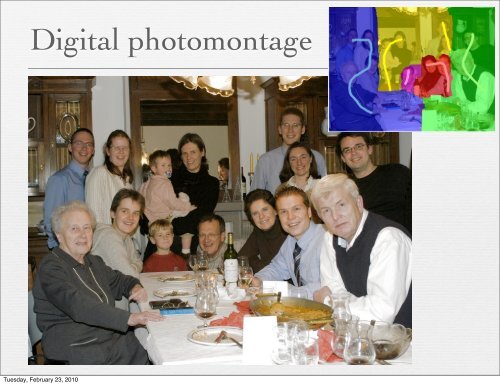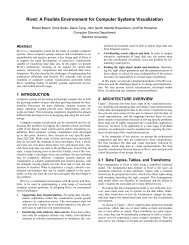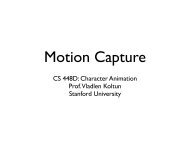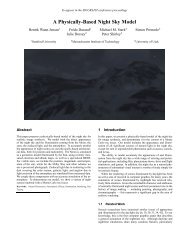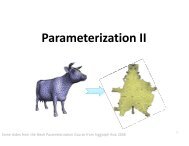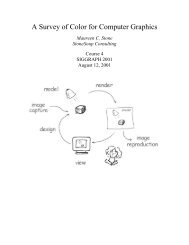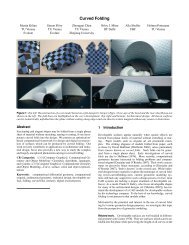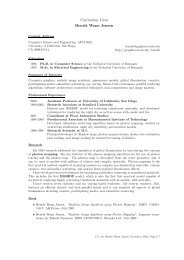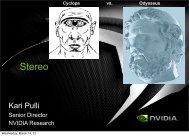Digital image stabilization - Computer Graphics Laboratory
Digital image stabilization - Computer Graphics Laboratory
Digital image stabilization - Computer Graphics Laboratory
Create successful ePaper yourself
Turn your PDF publications into a flip-book with our unique Google optimized e-Paper software.
<strong>Digital</strong> photomontage<br />
Tuesday, February 23, 2010<br />
Figure 1 From a set of five source <strong>image</strong>s (of which four are shown on the left), we quickly create a com<br />
and looking at the camera (right). We simply flip through the stack and coarsely draw strokes using the des<br />
wish to add to the composite. The user-applied strokes and computed regions are color-coded by the border<br />
Time-lapse mosaics: merging a time-lapse series into a single <strong>image</strong><br />
in which time varies across the frame, without visible artifacts<br />
from movement in the scene (Figure 7).<br />
Panoramic stitching: creating panoramic mosaics from multiple<br />
<strong>image</strong>s covering different portions of a scene, without ghosting artifacts<br />
due to motion of foreground objects (Figure 8).<br />
Clean-plate production: removing transient objects (such as people)<br />
from a scene in order to produce a clear view of the background,<br />
known as a “clean plate” (Figures 9 and 12).<br />
1.1 Related work<br />
The history of photomontage is nearly as old as the history of photography<br />
itself. Photomontage has been practiced at least since the<br />
mid-nineteenth century, when artists like Oscar Rejlander [1857]<br />
and Henry Peach Robinson [1869] began combining multiple photographs<br />
to express greater detail. Much more recently, artists like<br />
two natural <strong>image</strong>s in<br />
els to come from one<br />
the fusion of multiple<br />
objectives.<br />
Gradient-domain fus<br />
create new <strong>image</strong>s fro<br />
basic approach to cre<br />
used such an approac<br />
approach is most clos<br />
duced by Perez et al.<br />
<strong>image</strong> is copied into<br />
Our work differs, ho<br />
many regions simulta<br />
<strong>image</strong>” to provide bou<br />
son equation must be<br />
also extend this earli<br />
Poisson equation alo<br />
rent work, Levin et a<br />
panoramic mosaics, a<br />
dient domain of a sce


